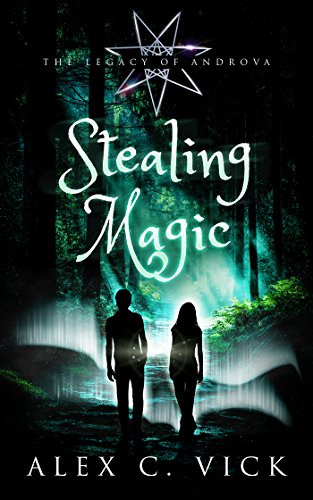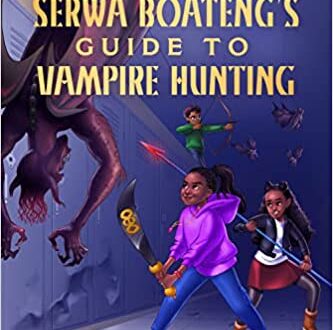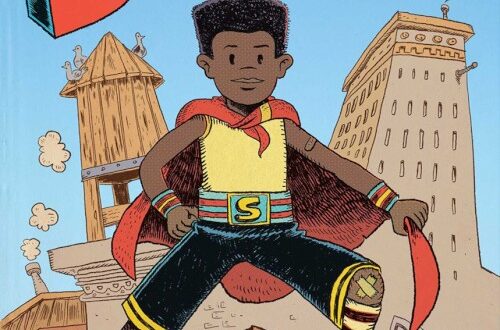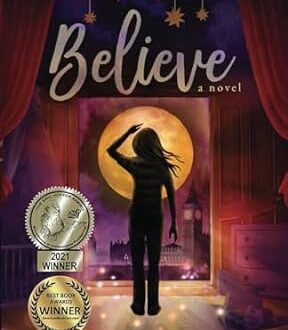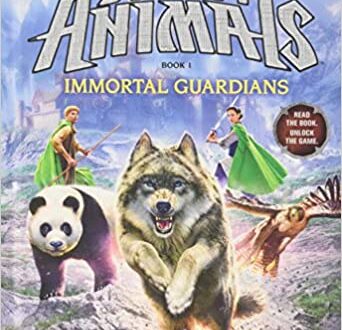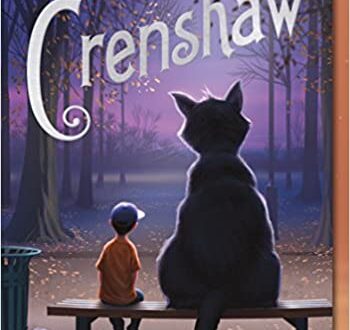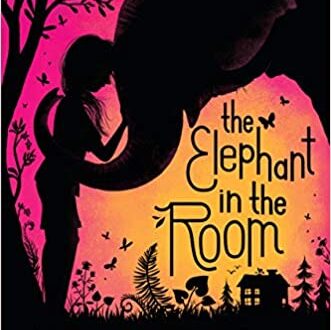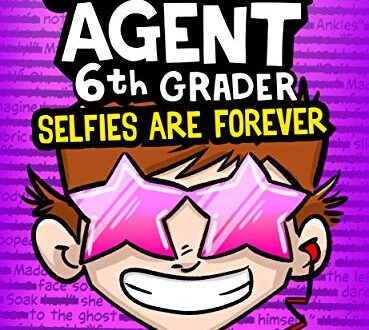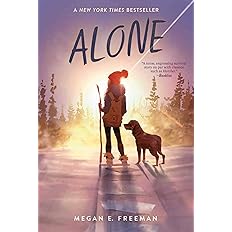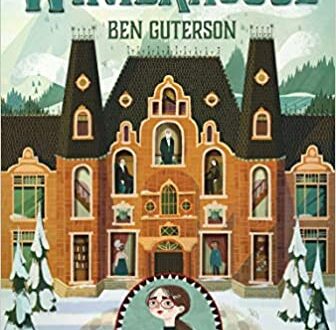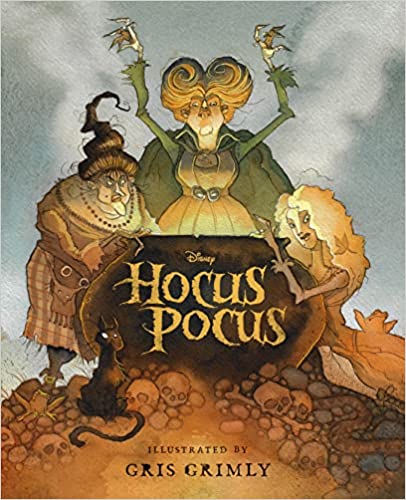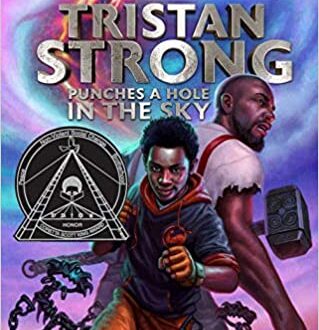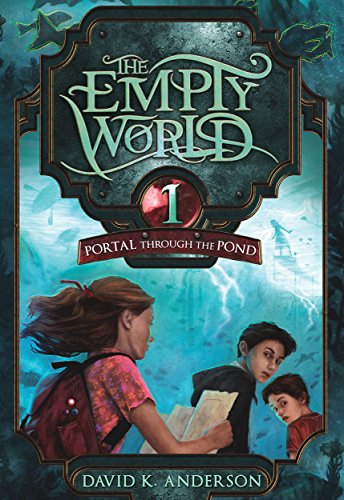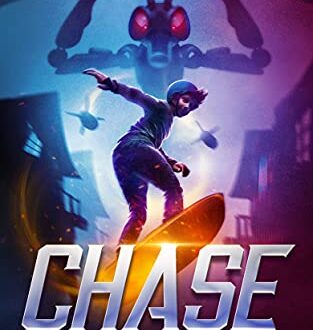-
Stealing Magic (The Legacy of Androva Book 1)
Jax is a fourteen-year-old magic-taker from Androva. He’s also a rule breaker. He should not have opened a portal to our world in daylight, no matter how fed up he was with the rules, or how interested he was in Shannon.
Shannon considers herself to be ordinary. She loves escaping into fantasy books, but she never actually believed in magic. Not until the day she opens her eyes to find herself surrounded by it. And that boy, the one with the green eyes, who winks at her before he disappears into thin air. Who is he? Where does he come from?
When Shannon first touches the silver force field created by Jax, a treaty is broken, giving an ancient enemy the chance he needs to regain his power. The two teenagers don’t have much time to figure out what is going on, and they’re going to need all of their combined magical ability to stand a chance of surviving.
The next ten days will be the most exciting and terrifying of their lives (so far!).
From author Alex C. Vick for Readers 10-14.
-
The Golden Spice of Health and Flavor!
Hey there, curious taste buds! Prepare for a flavorful journey as we learn about the benefits of turmeric—a vibrant spice with rumored amazing health benefits.
A relative of ginger, this vivid yellow-orange spice is common in Indian, Southeast Asian, and Middle Eastern cooking. Its rhizomes (mass of roots) are used in cooking. Also, for dyeing the robes of Buddhists monks.
Rhizomes are boiled and dried, then ground into a yellow powder used to color and flavor Asian dishes, particularly curries. Turmeric powder has a warm, bitter, black pepper-like flavor and earthy, mustard-like aroma.
Turmeric is one of the key ingredients in many Asian dishes. Many products, such as canned beverages, baked goods, dairy products, and sauces, use it to add a yellow, golden, or brown color. It is a principal ingredient in curry powders. Although typically used in its dried, powdered form, turmeric also is used fresh, like ginger. It has many uses in East Asian recipes.
Find out what turmeric can—and can’t—do for your health.
It has also been used as a medicine in places like India for centuries for various illnesses. Lately, many have been claiming that turmeric is a super food that can fight cancer, ease depression, and more. So far, testing has not backed up many health claims, apart from its anti-microbial properties.
Scientific testing has shown turmeric has potent anti-microbial properties. Many studies have shown turmeric and curcumin as promising anti-bacterial, anti-fungal, and anti-viral agents. They have proven their ability to curb the spread of microorganisms that cause illnesses and deadly diseases.
Turmeric is effective against various microbes. Thus, turmeric could assist in the prevention and treatment of several microbial infections.
Does turmeric have any proven health benefits?
Turmeric is a favorite spice around the globe that many believe contains a wide array of health benefits—from its antioxidant contents to its ability to soothe and prevent inflammation.
What is in turmeric that makes it beneficial?
Many believe that curcumin, the active compound in turmeric, has numerous health benefits, such as protecting against heart disease, Alzheimer’s, and cancer. They also believe that it is a potent anti-inflammatory and antioxidant. And that it may also help improve symptoms of depression and arthritis.
Is it safe to take turmeric every day?
Taking turmeric in low amounts (the levels added in food) generally does not pose any health problems. According to the World Health Organization (WHO), it is safe to consume 1.4 mg of turmeric per pound of body weight each day. Higher doses of turmeric, however, when consumed for longer periods, may harm the body.
What are the side effects of turmeric?
Turmeric typically has few problem side effects, but it can lead to stomach problems, nausea, dizziness, or diarrhea in some cases.
The next time you’re under the weather, you may want to sip some turmeric tea. Curcumin might help you to fight off a variety of viruses, including herpes and the flu. But most of the research on this was done in a lab, not on people.
Keep in mind that turmeric is only about 3% curcumin, and your body doesn’t absorb curcumin well. So, the occasional cup of tea won’t be a cure-all. But it can’t hurt.
AIME
-
Race to the Sun
Lately, seventh grader Nizhoni Begay has been able to detect monsters, like that man in the fancy suit who was in the bleachers at her basketball game.
Turns out he’s Mr. Charles, her dad’s new boss at the oil and gas company, and he’s alarmingly interested in Nizhoni and her brother, Mac, their Navajo heritage, and the legend of the Hero Twins. Nizhoni knows he’s a threat, but her father won’t believe her. When Dad disappears the next day, leaving behind a message that says “Run!”, the siblings and Nizhoni’s best friend, Davery, are thrust into a rescue mission that can only be accomplished with the help of Diné Holy People, all disguised as quirky characters.
Their aid will come at a price: the kids must pass a series of trials in which it seems like nature itself is out to kill them. If Nizhoni, Mac, and Davery can reach the House of the Sun, they will be outfitted with what they need to defeat the ancient monsters Mr. Charles has unleashed.
But it will take more than weapons for Nizhoni to become the hero she was destined to be.
From author Rebecca Roanhorse for Readers 8-12.
-
The Thrilling World of Birdwatching!
Greetings, young nature enthusiasts! Are you ready to embark on an awe-inspiring journey into the enchanting realm of birdwatching? Grab your binoculars and prepare to witness the vibrant feathers, graceful flights, and melodious songs of our feathered friends up close. Today, we’ll discover how this captivating hobby can unveil a whole new dimension of the natural world. From identifying different bird species and learning their unique behaviors to exploring their habitats and becoming stewards of the environment. Birdwatching will ignite your curiosity and nurture a deep appreciation for the amazing avian creatures that grace our skies. So, dust off your field guides, sharpen your observation skills, and let’s embark on a journey of discovery together. Let’s explore where every chirp and flutter bring a new moment of wonder!
To begin with birds can be seen almost anywhere, and you don’t need binoculars or a telescope. Secondly, millions go bird watching every year. So, to make the experience as pleasant as possible birdwatchers developed the Birdwatcher’s Code. It puts the interests of birds first and respects other people, whether or not they are interested in birds.
The Code consists of 4 rules:
- Avoid disturbing birds and their habitats – the birds’ interests should always come first.
- Be an ambassador for birdwatching.
- Be respectful of the bird’s habitat and people’s property that the birds are on. Respect the wishes of the local residents and landowners, and don’t enter private property without permission.
- Think about the interests of wildlife and local people before passing on news of a rare bird, especially during the breeding season.
You don’t need much to enjoy birds—just your eyes and ears. Plus, you don’t need to know anything about birds to enjoy watching them. But if you are really interested in learning about the birds that you are watching. It helps if you have a bird guidebook that will help you identify the different birds you see in nature.
Birds respond to people in many ways, depending on the species, location, and time of year.
Disturbance can keep birds from their nests, leaving chicks hungry or enabling predators to take eggs or young.
During cold weather or when migrants have just made a long flight, repeatedly flushing birds can mean they use up vital energy that they need for feeding.
Whether your particular interest is photography, sound-recording, or birdwatching, remember that the interests of the birds must always come first.
- Avoid going too close to birds or disturbing their habitats – if a bird flies away or makes repeated alarm calls, you’re too close. And if it leaves, you won’t get a good view.
- Stay on roads and paths where they exist and avoid disturbing the habitats used by birds.
- Think about your fieldcraft. Disturbance is not just about going too close – a flock of wading birds on the foreshore can be disturbed from a mile away if you stand on the seawall.
- Repeatedly playing a recording of birdsong or calls to encourage a bird to respond can divert a territorial bird from other important duties, such as feeding or protecting its young. Never use playback to attract a species during its breeding season.
Whether you’re watching small birds in your backyard, or birds of prey soaring hundreds of feet above your head, birds are everywhere. The most important thing to remember is to enjoy watching and listening.
Just remember, contrary to popular belief, you don’t need expensive equipment or expert knowledge. The most important ‘tools’ are your eyes, ears, and brain! All the other things are optional.
AIME
-
I Shrunk My Best Friend! – Book 1 – Ooops!
Bella and her best friend, Joe are two very smart kids who spend every spare minute together. One day, they devise a plan, a plan that is going to make them super rich and super famous. It is such a great plan that they’ll be able to skip school and even have their own TV show! What could be better than that?
However, this particular plan does not go ahead the way Bella and Joe had hoped, and they quickly find themselves faced with a huge problem; one that they are unable to solve on their own. Then when Bella’s secret crush at school becomes involved, things begin to get very interesting.
From start to finish, this is a very funny book that will keep you laughing as well as trying to guess what is going to happen next.
From author Katrina Kahler and John Zakour for Readers 8-12.
-
Welcome to the World of Black Holes
Welcome star gazers and future astronauts. Today we are going to explore the world of black holes.
A black hole is a place in space where gravity’s pull is so powerful that even light cannot get out. The gravity is so strong because matter has been squeezed into a tiny space. This can happen when a star is dying.
Because no light can get out, people can’t see black holes. They are invisible. Space telescopes with special tools can help find black holes. The special tools can see how stars that are very close to black holes act differently than other stars. If fact, these tools helped scientists discover that there is a supermassive black hole at the center of our own galaxy.
Black holes can be big or small. Scientists think the smallest black holes are as small as just one atom. These black holes are very tiny but have the mass of a large mountain. Mass is the amount of matter, or “stuff,” in an object.
Another kind of black hole is called “stellar.” Its mass can be up to 20 times more than the mass of the sun. There may be many, many stellar mass black holes in Earth’s galaxy. Earth’s galaxy is called the Milky Way.
The largest black holes are called “supermassive.” These black holes have masses that are more than 1 million suns together. Scientists have found proof that every large galaxy contains a supermassive black hole at its center. The supermassive black hole at the center of the Milky Way galaxy is called Sagittarius A. It has a mass equal to about 4 million suns and would fit inside a very large ball that could hold a few million Earths.
Scientists think supermassive black holes were made at the same time as the galaxy they are in.
But how do black holes form?
Scientists think the smallest black holes formed when the universe began.
Stellar black holes are made when the center of a very big star falls in upon itself, or collapses. When this happens, it causes a supernova. A supernova is an exploding star that blasts part of the star into space.
If black holes are “black,” how do scientists know they are there?
Strong gravity pulls all the light into the middle of the black hole, making the black hole invisible. But scientists can see how the strong gravity affects the stars and gas around the black hole. Scientists can study stars to find out if they are flying around, or orbiting, a black hole.
A black hole and a star make high-energy light when they are close together. This kind of light cannot be seen with human eyes. Scientists use satellites and telescopes in space to see the high-energy light.
Could a black hole destroy earth?
Black holes do not go around in space eating stars, moons, and planets. Earth will not fall into a black hole because no black hole is close enough to the solar system for Earth to do that.
Even if a black hole has the same mass as the sun. And it was to take the place of the sun, Earth still would not fall in. The black hole would have the same gravity as the sun. Earth and the other planets would orbit the black hole as they orbit the sun now.
The sun will never turn into a black hole. The sun is not a big enough star to make a black hole.
Which is a good thing to know—both as a regular kid and as a future scientist or astronaut.
AIME
-
Hocus Pocus: The Illustrated Novelization
Relive the classic Halloween film Hocus Pocus with an Illustrated Novelization that retells the story alongside stunning original artwork from Gris Grimly!
For the first time ever, fans and readers of all ages can enjoy the full story of the immensely popular Hocus Pocus with this deluxe Illustrated Novelization that will show fans the likes of Max and Dani Dennison, the Sanderson Sisters, Thackery Binx the cat, and other iconic characters as only celebrated, renowned artist Gris Grimly can: in all of their darkly humorous, unique gruesome glory!
From author A.W. Jantha and Illustrator Gris Grimly for Readers 8+.
-
The Fun and Magic of Writing Poetry!
Hello, young wordsmiths! Are you ready to embark on a poetic journey filled with rhythm, imagery, and the beauty of language? Today we’ll explore poetry’s fascinating world. Whether you’re a budding poet or simply curious about the art of expressing yourself through verse, we’ll explore the power of poetry and discover how it can ignite your imagination and touch hearts. Get ready to unleash your creativity, play with words, and unlock the magic that lies within you. So, grab your pens, open your minds, and let’s venture into the realm of poetic expression together!
Writing poetry is not as hard as you might think it is. Especially if you know a few tips about how to go about writing a poem. Poetry writing challenges you to really think about words and images. Words that you want to use to make the reader think. And the images that you want to create in the reader’s mind.
But where and how do you begin when you don’t know how to write a poem?
Well, you could start out with a clever poem, which is called an acrostic poem. You write a word on a piece of paper—like DOG. Then start each line with one letter in your word. For example, an acrostic poem for “dog” could look like this: Devoted furry buddy / On my bed is sleeping / Greatest of pets.
Once you have had fun with writing acrostic poems, you could then try writing 3-line poems called “haiku.” They are of Japanese origin. The first and final lines have five syllables each, while the second line has seven. Often they describe a concrete object or image, such as this one about a cat: Tired cat sleeps all night. / He needs lots of rest for a / Long day of napping. The very short format requires you to consider your word choices very carefully. But they can create a lot of impact.
Limericks are short, 5-line poems that have a particular rhyme scheme, where the first two lines and the last line rhyme, with a different rhyme sound for the middle two lines: AABBA. For example: A talkative man from Seattle / would spend his days speaking to cattle. / When asked what he said, / one old cow shook her head, / and replied, “Why it’s nothing but prattle! Because of their strong beat and heavy use of rhyming sounds, limericks are a lot of fun for readers to read or recite aloud.
Here are some tips to help you get started writing poetry.
Brainstorming. There are a variety of brainstorming activities you can do to help generate ideas for poems. Try to keep your audience in mind when brainstorming.
Use all your senses when writing. Writers often focus most heavily on sight, but your other senses also provide the type of vivid detail that readers enjoy. Think about taste, smell, hearing, and touch as well.
Write about feelings. Poetry can help readers explore their own feelings and learn about those of others.
Create a “found poem.” Go through a magazine, newspaper, or book and highlight several dozen words you find interesting or appealing. You don’t have to have a particular reason for why you like those words. Once you’ve found between 20-50 words, arrange the words into a poem. You can add in new words where needed.
Take a nature walk. As you explore, note things that interest you, such as the weather or scenery. Write your ideas in a notebook. When you get back home, decide on what notes to use in the poem. The poem can tell a story or just describe a scene or a feeling. Use specific, concrete words to describe what you see and feel.
Be adventurous! You can write about anything you can imagine. Everyday experiences are often excellent subjects for poems. But you could just as easily write a poem about a dragon or a unicorn.
Be patient with yourself. Writing takes a lot of time and practice. You may not like the poems you produce at first, but keep writing. You will get better!
AIME
-
Portal Through the Pond (Empty World Saga Book 1)
They said her grandfather was dead. They said her grandmother was crazy. Christy knows they’re wrong.
When her grandmother dies, 13-year-old Christy inherits an old family secret: the pond behind her house is in fact a portal to another world. What’s more, she learns that her grandfather went through the portal when he mysteriously “disappeared” nine years ago. Christy tries to respect her grandmother’s final wishes and not go exploring, but when a classmate named Rob falls into the pond, she has to act.
Since no one would believe her if she told them the truth about the pond, Christy arranges her own rescue party. In order to rescue Rob, she’ll have to brave a bizarre alien landscape, evade hostile creatures, and protect Danny, the boy from next door who followed her through the portal.
Meanwhile on Earth, the grown-ups launch a frantic search, and they’re willing to drain the pond to find out what happened. Will Christy be able to find her grandfather, rescue Rob, and return safely to Earth before she becomes a permanent resident of the Empty World?
From author David K. Anderson for Readers 8-13.
-
Riding the Waves—The Thrilling World of Surfing!
Are you ready to embark on an exhilarating journey into the thrilling world of surfing? Grab your boards and prepare to catch the ultimate adventure on the water. Read on as we dive into the art of riding the waves, exploring the excitement and joy that comes with harnessing the power of the ocean. Surfing is a sport that requires skill, courage, and a deep connection with the sea. So, wax up your boards, strap on your leash, and get ready to embrace the endless possibilities that await you on the surf.
Surfing is an ancient sport first described by European explorers of the South Pacific. Just like today, both men and women took part in surfing. Unlike today, they surfed wearing no clothes.
Surfing remained a hobby more than a sport until Olympic athlete Duke Kahanamoku popularized it in the early 1900s. Inexpensive new materials like plastic and fiberglass were introduced to surfboard design in the 1940s, making surfing even more popular and widespread. Today surfing is found around the world.
There are four major types of waves. Rolling waves are the most familiar waves, and the type most surfers prefer because they break in a stable pattern. Dumping waves are more unpredictable and are usually limited to experienced surfers. Surging waves are the most dangerous and are most often present on steep or rocky shores. Standing waves are also called stationary waves because they are constant and do not lose strength.
The concept of surfing may be simple, but the practice is not. Surfers paddle to the surf line, or the area of open water where waves break. There, they sit on their boards and watch waves roll in to shore. When surfers see a wave they can ride, they paddle quickly to catch the rising wave. Just as the wave breaks, the surfers jump from their bellies to their feet, crouching on their boards.
Surfboards are divided into two major categories: longboards and shortboards. Longboards can be slightly wider and thicker, making them more stable and buoyant, or able to stay afloat. Shortboards are much easier to maneuver but more difficult to ride. Besides longboarding and shortboarding, athletes can also specialize in big-wave surfing, wake surfing, and bodysurfing.
The United States isn’t the only place that has surfers. Surfers overpopulate the waves off Bondi Beach in Sydney, Australia. Warm beaches like Bondi are not the only places surfers gather, surfers have dusted snow off their surfboards to chase waves off the coast of Antarctica, trekked through jungles to pristine beaches in Southeast Asia, shared the water with great white sharks in South Africa, and even ridden the “silver dragon,” the giant tidal bore of China’s Qiantang River.
Surfers are Ocean Athletes. They must know their physical skills and the environment. All surfers must be aware of weather patterns and topography or surface features of the shore. They must be strong swimmers. Surfers must also have an excellent sense of balance and be able to quickly react to changes in the environment.
If you are lucky enough to live by the ocean, maybe someday you can become a surfer and travel the world looking for the “perfect wave.”
AIME
